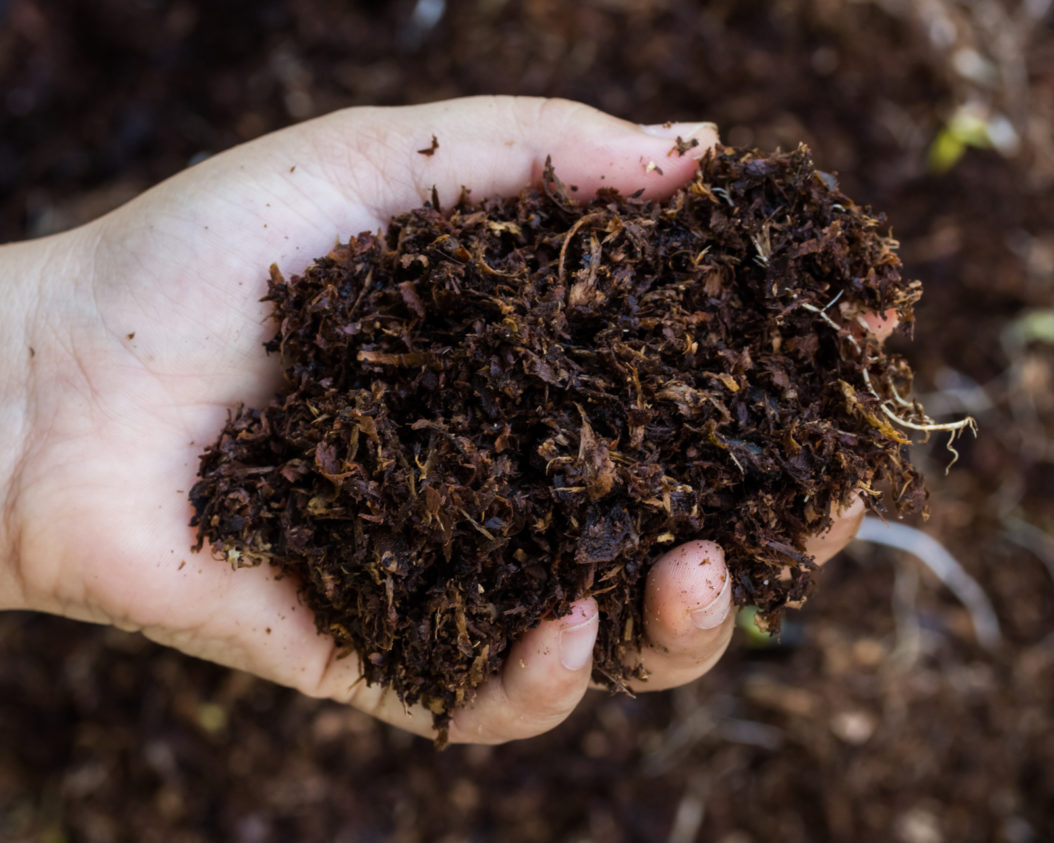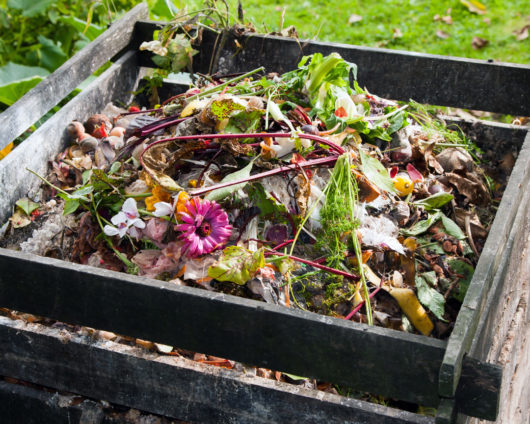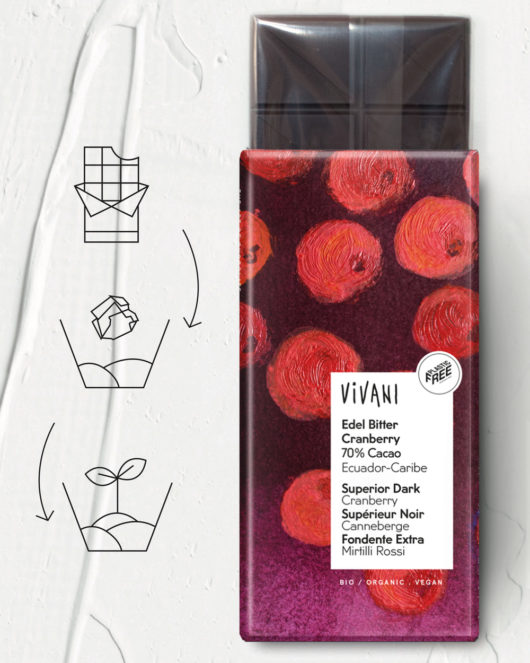From chocolate wrapper to fertile soil?
How to compost the packaging from your VIVANI chocolate
Text:
Alexander Kuhlmann
Photography:
© iStock, kurapy1
© piotr_malczyk
28 April 2020

They are the greenest production sites in existence: yes, we are talking about garden compost heaps. Not only do they help you to save money; they also produce invaluable soil that is rich in minerals. In this article, we reveal the correct way to compost and why you should always throw the packaging film from your VIVANI chocolate bar onto the compost heap… once you have enjoyed the delicious chocolate inside, of course.
Where to start?
With the right location.
Location is key for creating a good compost heap. It should be placed on soil to provide easy access for the most important workers at the compost heap – worms. Ideally, the compost bin should be positioned in partial shade. If placed in direct sunlight, it can dry out too quickly. If possible, try to give your compost heap a little protection from the rain; you could place it under a tree or near a large bush, for example. Why? We’ll explain more later.

What belongs in a compost bin?
The right kind of waste.
Generally speaking, you can compost lots of so-called waste from your garden or your kitchen. In terms of gardens, this includes grass cuttings, pruned branches and twigs, rotten fruit, leaves etc. In the kitchen this could be organic waste, such as potato peel, (organic) fruit and vegetable waste, egg shells – as well as coffee filters, teabags (without the string and paper tag) and packaging that has been designed for composting, such as our VIVANI chocolate film. Processed foods (i.e. leftovers from lunch) should not be thrown on the compost. This is because they tend to attract vermin, such as rats.
.
How do you compost?
With the right mixture.
A good balance of ingredients is key to a well-functioning compost bin. If your compost contains too much of one element it will slow the decomposition process, and the final product, i.e. the compost, will be of a poor quality. It is important to find the right balance between wet materials (e.g. grass cuttings) and dry materials (e.g. wood cuttings). This will help to guarantee the best possible supply of nitrogen and carbon, so that the micro-organisms, which are responsible for decomposing the compost, can work perfectly. The compost heap also needs a good amount of moisture. As such, you should regularly add a full watering can of water to the compost heap when it doesn’t rain for long periods. On the other hand, too much moisture can also be problematic. This is why it is recommended that you protect the compost from too much penetrating moisture, especially during periods of heavy and frequent rainfall.
Important: the smaller the items you add to the compost, the quicker they will decompose. For items that take a long time to rot down, such as eggshells, it is worth making the effort and breaking them up into smaller pieces. Larger branches and twigs should be chopped into smaller bits where possible. The compost should also be turned with a pitchfork from time to time.

Can you compost VIVANI film? Does it work?
Yes, it really does! It may surprise you, but, despite appearances, the film that we use to wrap our chocolate is not made of plastic. It is actually a natural NatureFlex™ film, made from renewable materials. As it is produced using sustainably sourced wood fibre as a base, it can be simply added to your garden compost heap and, if conditions are right, will decompose within 40 to 50 days. On one condition: that you have a well-balanced compost! If you add a film wrapper to your compost each day, or if the compost features too much of one type of component, it will affect the quality of your compost.